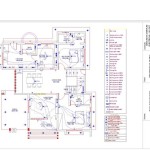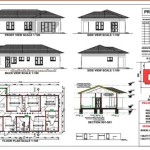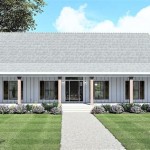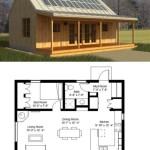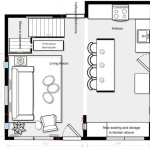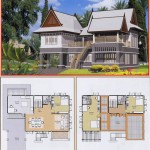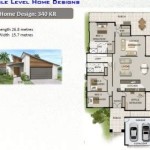Delving into the Sample Of House Plan In Autocad: Essential Elements
Creating a house plan in AutoCAD demands meticulous attention to specific aspects. A well-crafted plan not only serves as a blueprint for construction but also ensures the functionality, aesthetics, and overall success of your dream home. This article provides a comprehensive guide to the essential elements of a sample house plan in AutoCAD, empowering you with the necessary knowledge to navigate the design process confidently.
1. Floor Plans and Layouts
The foundation of any house plan lies in its floor plans and layouts. These drawings accurately depict the arrangement and dimensions of rooms, walls, doors, and windows. They should clearly illustrate the flow of traffic and the intended use of each space. Consider the following guidelines:
- Scale and dimensions: Maintain accurate scale and dimensions to ensure precise measurements and proper proportions.
- Room sizes and shapes: Optimize room sizes and shapes for functionality and comfort. Consider furniture placement and circulation.
- Traffic flow: Design a logical traffic flow that connects rooms seamlessly without creating bottlenecks.
2. Elevations and Sections
Elevations and sections provide a three-dimensional perspective of the house. Elevations show the exterior walls and openings, while sections reveal the interior structure and details. These drawings play a crucial role in understanding the building's form, scale, and spatial relationships:
- Scale and accuracy: Ensure the scale and accuracy of elevations and sections for proper visualization and construction.
- Architectural details: Depict architectural details such as windows, doors, cornices, and moldings to convey the design intent.
- Structural elements: Include structural elements like beams, columns, and foundations to demonstrate the building's stability and support system.
3. Electrical Plans
Electrical plans outline the electrical system of the house, including lighting, outlets, switches, and wiring. Proper planning ensures the efficient and safe distribution of electricity throughout the building:
- Electrical symbols: Use standard electrical symbols to represent components and connections accurately.
- Circuit layout: Design a logical circuit layout to distribute power effectively and avoid overloading.
- Lighting design: Plan for adequate lighting in all areas, considering natural light and artificial sources.
4. Plumbing Plans
Plumbing plans depict the water supply, drainage, and waste disposal systems of the house. These drawings guide the installation of pipes, fixtures, and appliances:
- Water supply: Indicate the water source, pipes, and valves for cold and hot water distribution.
- Drainage and waste: Design an efficient drainage system that collects and disposes of wastewater from sinks, showers, and toilets.
- Fixture placement: Determine the location and size of plumbing fixtures, ensuring they align with the floor plan and meet ergonomic standards.
5. HVAC Plans
HVAC plans outline the heating, ventilation, and air conditioning systems of the house. These drawings ensure a comfortable indoor environment and energy efficiency:
- HVAC equipment: Identify the type and location of HVAC equipment, including furnaces, air conditioners, and ductwork.
- Airflow design: Plan for optimal airflow throughout the house to maintain proper ventilation and temperature control.
- Energy efficiency: Incorporate energy-efficient measures such as insulation, air sealing, and high-performance HVAC systems.
6. Site Plan
A site plan shows the relationship between the house and its surrounding property. It includes the location of the building, driveways, walkways, and landscaping:
- Property boundaries: Clearly define the property boundaries and setbacks from neighboring properties.
- Site features: Indicate existing site features such as trees, slopes, and easements that may impact the design.
- Landscaping design: Integrate landscaping elements into the plan to enhance the outdoor living space and curb appeal.
7. Additional Considerations
In addition to the essential elements listed above, consider the following:
- Building codes and regulations: Ensure compliance with local building codes and regulations to meet safety and construction standards.
- Sustainability: Incorporate sustainable design features to minimize environmental impact and reduce operating costs.
- Collaboration: Work closely with architects, engineers, and contractors to ensure a cohesive design and successful execution.
By understanding and incorporating these essential elements into your sample house plan in AutoCAD, you lay the foundation for a well-designed and functional home that meets your specific needs and aspirations.

How To Draw Floor Plans In Autocad Edrawmax

Floor Plan Free Cads

Ground Floor And First House Sample Plan Autocad File Cadbull

House Plan By Ar Mandy Autocad Architectural Floor Plans
An Architectural House Plan 2d Floor Plans In Autocad Upwork
40 X45 House Plan Free Autocad 2d Drawing N Design

Autocad 2d Floor Plan Building Plans Working Drawings Redraw For 10 Freelancer Asia Siddique Architectclub Kwork

Auto Cad 2d Map

Chapter 1 Introduction Of Autocad Tutorials Visual Graphic Communication Programs For Interior Design

Floor Plan Create 2d 3d Plans Autodesk

